Apollo 11 Mission : Destination Moon for Angénieux !
The Incredible Success of the Apollo 11 Mission
The Apollo program began in 1961 and ended in 1975. Its mission : to send a crew of three men to the moon, two of them reaching the surface of the Moon, and to bring them all back safe and sound, using the largest rocket ever built, the Saturn V, with the ability to launch two space modules (the Command Module and the Lunar Module). The program began badly with a fire in the Apollo 1, still on the ground on January 27, 1967, and resulted in the tragic deaths of its crew members, astronauts Virgil Grisson, Edward White, and Roger Chaffee.
Apollo 7, in October, 1968, was the first new manned mission after Apollo 1. Six of the following Apollo missions (11, 12, 14, 15, 16, and 17) reached the Moon.
For Apollo 11, the rocket lifted off from Kennedy Space Center in Florida on July 16, 1969. It carried a crew consisting of Neil Armstrong, commander of the mission and pilot of the Lunar Module, Edwin “Buzz” Aldrin, who would go with Armstrong to the lunar surface, and Michael Collins, pilot of the Control Module that would remain in lunar orbit. Armstrong and Aldrin, after a bit of a hard landing, spent 21 hours and 30 minutes on the Moon and made a two-and-a-half-hour excursion outside the module. After re-launch, the Lunar Module rejoined the Command Module still in lunar orbit. The Apollo spacecraft then returned to the route toward Earth and splashed down, without incident, in the Pacific Ocean after a flight that had lasted 195 hours.
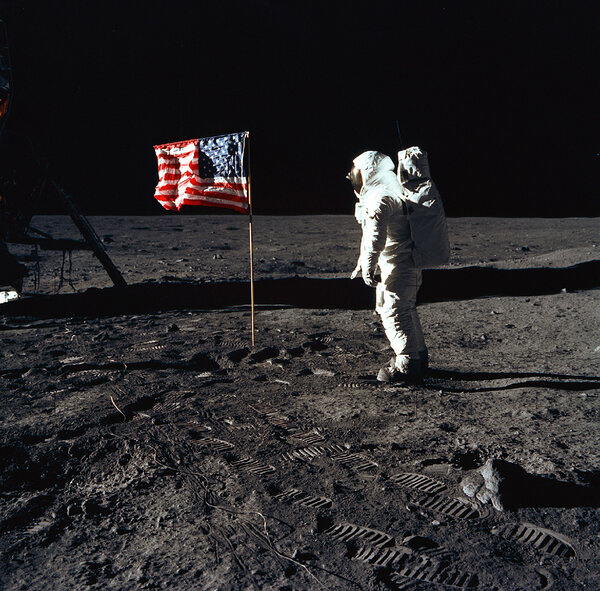
The Choice of Imaging Equipment, A Strategic Communication Decision
To show the world filmed images of NASA’s successes in its “race to space” engaged against the USSR, the choice of imaging equipment represents a strategic communication decision. In 1961, NASA announced a call for submissions for television camera manufacturers for its Apollo missions. Maurer and RCA Astro Electronics (a division of the American camera manufacturer RCA), already NASA’s suppliers, are chosen to be integrated in the Apollo program. Requirements for such cameras are high. NASA wanted small, lightweight cameras, reliable in the lunar environment, low in energy consumption and easy for astronauts to operate.
To equip these special cameras, optics are required. Fame and reputation of excellence are attached to Angénieux in the United States since the 1950’s among film camera manufacturers as well as broadcast tube camera manufacturers. This explains the reason why the prestigious American space agency showed such great interest in the lenses of this small French company. Angenieux lenses had already been selected for Ranger and Gemini missions before Apollo’s and have proved themselves worthy of such a mission. Three of the six lenses that were on board Ranger 7 that captured the first pictures of the Moon on July 31, 1964 are Angenieux 25mm ultra luminous fixed lenses. It was decided that Angenieux lenses will remain on the forthcoming Apollo program. For Angénieux, the adventure of the space conquest continues.
After the Apollo 1 launchpad fire, NASA concentrated on the project’s dependability. The transmission of images for television became secondary or even problematic because of the extra weight to carry. Manned missions resumed with Apollo 7. Black and white tube cameras from RCA and 16mm Maurer were selected for the Apollo 7, 8 and 9 missions. Maurer cameras were positioned in the command module. They were equipped with French Angenieux fixed lenses 75mm f/2,5. On the RCA cameras in the Lunar module, American Fairchild and Argus Optics lenses were used.
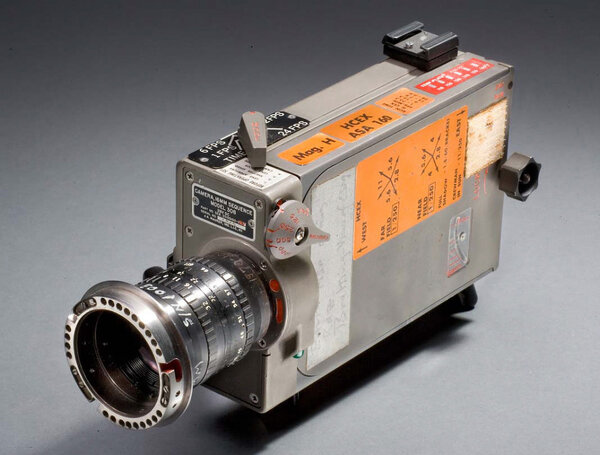
Color images came with the Apollo 10. The manufacturer Westinghouse would join NASA’s lunar project, replacing RCA. Indeed, Westinghouse had developed a new color camera using a single SEC (Secondary Electron Conduction) tube originally developed for the US military. This tube was more sensitive than those of earlier cameras and made it possible to extend transmissions of televised images from the lunar morning to the evening. It offered a better view in the shadowy zones around the Lunar Module
Its design system, called “Field Sequential”, allows a lighter and more compact camera consuming less energy than traditional three-tube color cameras. There was still one problem : the TV signal had to be reconstructed to be compatible with the NTSC signal used for American television broadcasts. NASA therefore used a system with a dual magnetic reader/recorder coupled together, one writing on the magnetic tape from the signal coming from the camera, the other reading it and converting it to the NTSC format of American color television. To facilitate the use of this camera, Westinghouse equipped it with a portable monitor and an Angenieux 6x (6x25, f/4.4) zoom lens adapted from a 16mm film zoom lens. This adaptation was necessary to cover the sensitive area of the 25mm (on the diagonal) tube. The first tests of the Westinghouse color camera with an Angénieux 6x25 zoom lens on Apollo 10 in May, 1969 were successful. The equipment provided the first color images filmed of the crew and the Moon, up close.
For Apollo 11, however, NASA decided to shoot man’s first steps on the moon live from the lunar module with a black and white Westinghouse camera (equipped with Fairchild optics) to limit the risk of transmission problems. The color camera with the 6x25 stayed in the Control Module and took live color images of Neil Armstrong and Buzz Aldrin on their trip to and from the moon. A 16mm Maurer camera with Angénieux 75mm optics was also on board the Command Module taking images of the Lunar Module’s separation and docking maneuvers from the porthole.
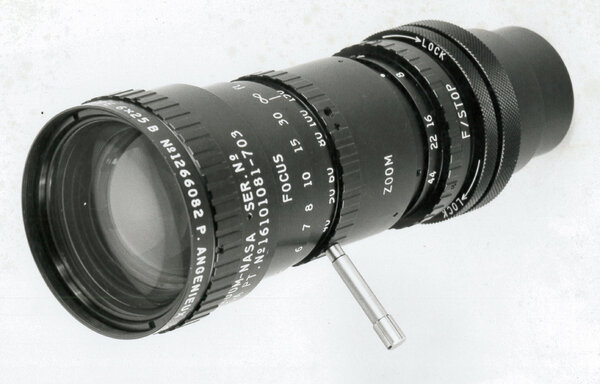
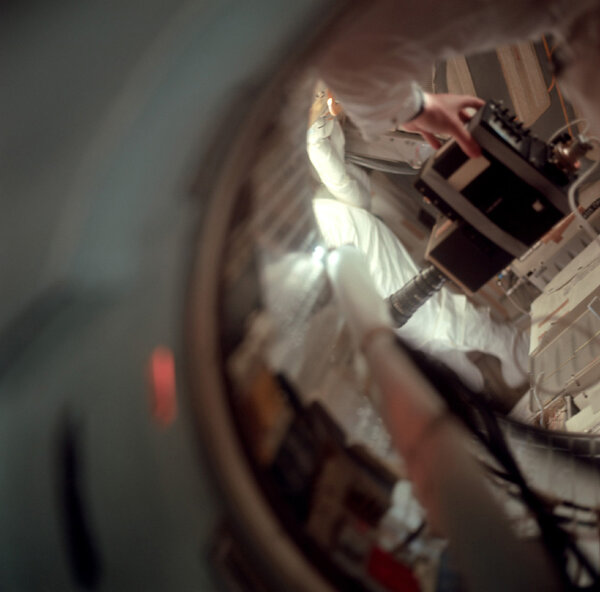
Angénieux, A Pragmatic Inventivness in the Service of NASA
The first 6x25s were actually 6x12.5s with a 2x teleconverter. These lenses had focusing rings marked from 12.5 to 75. In 1969 and 1970, to answer NASA’s requirements, the optical designer Jacques Debize redesigned the back of the 6x12.5 to make it into a shorter 6x25 to limit the risk of bumping into the astronaut’s helmet. This new version was released in July,1970. The zoom rings were then engraved from 25 to150mm. To address the space-specific condition of the vacuum, Angénieux developed a concept for lubricating the mechanics, as the usual grease would evaporate in a vacuum and fog the lens elements. New optics treatments were developed to combat solar radiation. To resist chocks and heat during rocket launch, those optics are particularly resistant.
Following a successful Apollo 11 mission, the 6X25 zoom lens was selected on all of NASA’s following Apollo missions. It was on board the lunar module of Apollo 12,13, and 14 missions.
On Apollo 15,16 and 17, TV retransmissions on lunar ground are made from a rover equipped with a RCA color camera and the 6x12,5 Angénieux zoom lens.
The Angenieux adventure of space exploration doesn’t finish with the end of Apollo missions. It continues well beyond with Skylab, US space shuttles, until recent Dawn mission which ended in November 2018.
While Angenieux’s contribution to the US space conquest never really counted as an important revenue source, it definitively established Angenieux as an important brand in history and secured its fame of excellence.
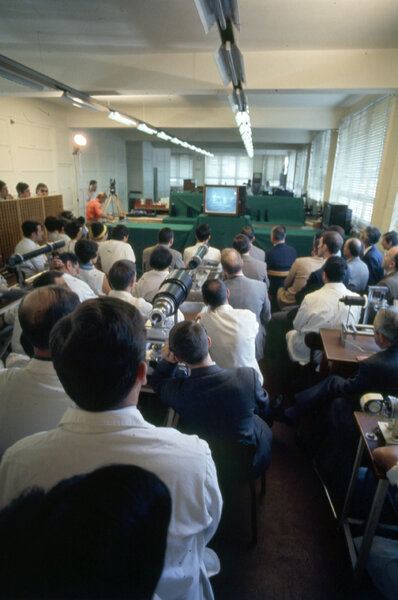

To read more about the full collaboration between Angenieux and NASA, the book « Angenieux and Cinema : from Light to Image » (éd.SilvanaEditoriale – 39€ / 60$) already available in bookshops in France and Benelux, soon in UK and US, tells the brand’s attachment for almost 85 years to cinema and comes back to all domains Angenieux was interested in : photography, television, medical, optronics, security and space

English Informations about the book Angénieux and Cinema : From Light to Image.
 En
En Fr
Fr





